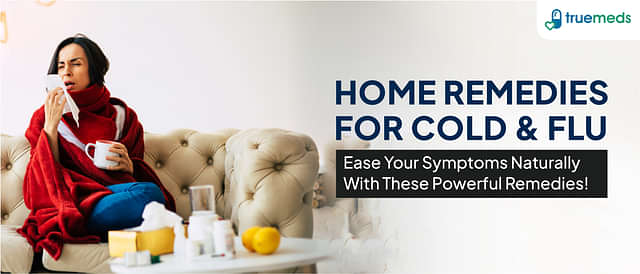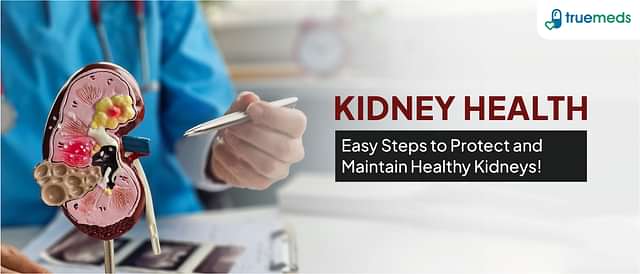Cough And Cold
Cough and cold are common respiratory illnesses that affect millions of people worldwide. The common cold, also known as acute rhinitis, is a viral infection of the upper respiratory tract that impacts the nose, throat, sinuses, and larynx. It is one of the most frequent illnesses in humans, causing symptoms such as runny nose, nasal congestion, sore throat, sneezing, coughing, headache, and fatigue. While there is no cure for cough and cold, rest, hydration, and over-the-counter medications can help alleviate symptoms and support recovery.
Last updated on : 30 May, 2025
Read time : 15 mins
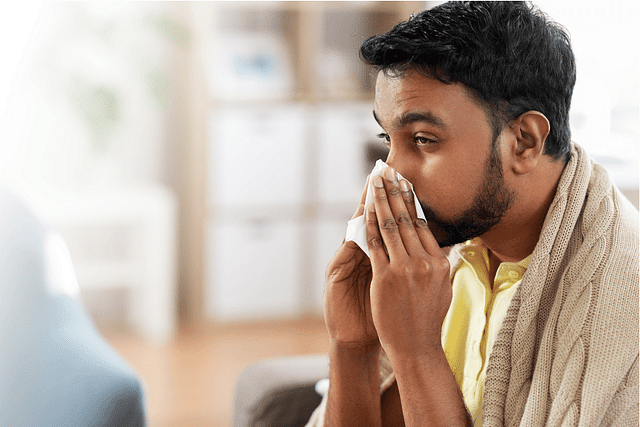
Overview of Common Cold
The common cold, also known as acute rhinitis, is a viral infection that affects the upper respiratory tract, including the nose and throat. It is one of the most prevalent illnesses worldwide, with adults experiencing an average of two to three colds per year, while children may have even more frequent episodes. In this article, we will explore the causes, symptoms, and treatment options for the common cold.
What is the Common Cold?
Cough and cold are common health issues, often caused by viral infections affecting the upper respiratory tract. The common cold, also referred to as an upper respiratory tract infection (URI), is an acute, self-limited viral infection that impacts the upper airway and may also involve the lower respiratory tract. It is caused by various viruses, with rhinoviruses being the most common culprit. Cough and cold are highly contagious and can spread through airborne droplets or direct contact with contaminated surfaces. While anyone can catch a cold, children, elderly individuals, and those with weakened immune systems are more susceptible to the infection.
Key Factors about Common Cold
| Category | Details |
| Also Referred as | Cold, acute viral nasopharyngitis, nasopharyngitis, viral rhinitis, rhinopharyngitis, acute coryza, head cold, upper respiratory tract infection (URTI) |
| Commonly Occurs In | Children and adults, especially during winter or rainy seasons |
| Affected Organ | Upper respiratory tract (nose, throat) |
| Type | Viral infection |
| Common Signs | Cough, runny or stuffy nose, sneezing, sore throat, mild fever, headache, malaise |
| Consulting Specialist | Infectious disease specialist or primary care physician |
| Treatement Procedures | Symptomatic relief with decongestants, antipyretics, and pain relievers |
| Managed By | Antihistamines and decongestants (phenylephrine, chlorpheniramine & fexofenadine), expectorants and antitussives (guaifenesin & dextromethorphan), pain relief medications (paracetamol, ibuprofen & aspirin) |
| Mimiciking Condition | Influenza, COVID-19, Allergies |
Symptoms of Common Cold
The common cold is a viral infection that affects the upper respiratory tract and is characterised by a variety of symptoms. Some of the common symptoms include:
1. Nasal congestion
One of the most common symptoms is nasal congestion, which can make breathing through the nose difficult. This occurs due to inflammation and swelling of the nasal passages.
2. Runny nose
A runny nose often accompanies nasal congestion, leading to clear or yellowish discharge. This symptom can be bothersome and may require frequent tissue use.
3. Sneezing
Frequent sneezing is a hallmark of the common cold, triggered by irritation in the nasal passages. It serves as a reflex to clear the airways.
4. Sore throat
Many individuals experience a sore throat, which can range from mild irritation to significant pain. This symptom is often caused by post-nasal drip or inflammation.
5. Cough
A persistent cough is common and may be dry or produce mucus. Coughing helps clear the throat and airways of mucus and irritants.
6. Fatigue
General fatigue or malaise often accompanies a cold, making individuals feel tired and less energetic. This can be due to the body’s immune response to the virus.
7. Headache
Some people may experience mild headaches during a cold, often resulting from sinus pressure or congestion. These headaches usually resolve as other symptoms improve.
8. Body aches
Mild body aches and discomfort can occur, contributing to an overall feeling of being unwell. This symptom is typically mild compared to flu symptoms.
9. Low-grade fever
While not as common as in the flu, some individuals may develop a low-grade fever. This slight increase in body temperature is part of the immune response.
10. Loss of appetite
Many individuals may experience a loss of appetite when they have a cold, which can be linked to general malaise and the body's focus on recovery. This symptom is often temporary and resolves as the individual begins to feel better.
11. Malaise
Malaise refers to a general feeling of discomfort, tiredness, or weakness. It often accompanies coughs and colds, leaving you feeling unwell and less energetic than usual. This symptom can make it hard to focus on daily activities and may improve as the cold resolves.
12. Watery Eyes
Watery eyes occur due to irritation or inflammation caused by a cold. The body produces extra tears to flush out irritants, leading to blurry vision or a constant need to wipe the eyes. This symptom is common when the cold affects the sinuses or conjunctiva.
13. Nasal Discharge
Nasal discharge, or a runny nose, is a typical cold symptom caused by inflammation of the nasal passages. The mucus may be clear at first but can turn yellow or green as the body fights the infection. It can make breathing uncomfortable and may require frequent cleaning.
Causes of Common Cold
The common cold is primarily caused by viral infections, with several specific viruses responsible for the majority of cases. The causes include:
1. Rhinoviruses
Rhinoviruses are the most common cause of the common cold, accounting for approximately 30–50% of all cases. They thrive in cooler temperatures, which is why colds are more prevalent in the fall and winter.
2. Coronaviruses
Another significant group of viruses that can cause colds are coronaviruses, which are different from the ones that cause COVID-19. These viruses typically lead to mild respiratory illnesses.
3. Adenoviruses
Adenoviruses can also cause cold-like symptoms, along with more severe respiratory infections. They are known for causing outbreaks in crowded settings, such as schools and military barracks.
4. Respiratory syncytial virus (RSV)
RSV is primarily known for causing bronchiolitis and pneumonia in young children but can also lead to cold symptoms in adults. It spreads easily through respiratory droplets.
5. Parainfluenza viruses
These viruses can cause respiratory infections, including cough in children and cold-like symptoms in adults. They are particularly common in the fall.
6. Influenza Virus
The influenza virus is a major cause of coughs and colds, leading to flu-like symptoms such as fever, chills, and body aches. It spreads easily through droplets when an infected person coughs or sneezes.
7. Coxsackievirus
Coxsackievirus, a type of enterovirus, can cause cold symptoms like cough, sore throat, and nasal congestion. It often affects children and can lead to other illnesses such as hand-foot-and-mouth disease.
8. Human Bocavirus (HBoV)
Human bocavirus is a relatively new virus associated with respiratory infections. It causes symptoms like cough, runny nose, and fever, especially in young children. It spreads through respiratory droplets or contact with contaminated surfaces.
Risk Factors of Common Cold
Certain factors can increase the likelihood of contracting the common cold, including:
- Season (more prevalent in the autumn and winter months)
- Age (more prevalent in children)
- Lack of sleep
- Stress
- Smoking and secondhand smoke
- People with chronic illnesses, HIV, AIDS, or those taking immunosuppressive medications
- Being in crowded areas such as offices, schools, or daycare centres
- Exposure to industrial smoke, toxic fumes, or other air pollutants
- Poor hand hygiene
- Exposure to contaminated objects
- Allergies
- Chronic respiratory illness
- Low immunity
- Close contact with the infected person
While these factors increase one's likelihood of catching a cold, there are many preventive measures that can be taken to reduce this risk.
Complications of Common Cold
Although the common cold is usually a mild and self-limiting condition, it can lead to complications in some cases, especially in vulnerable populations. Here are some possible complications:
1. Acute ear infection (otitis media)
The common cold virus can spread to the middle ear, causing inflammation and fluid buildup. Symptoms include earache, fever, and difficulty hearing. Children are more prone to this complication.
2. Asthma exacerbation
Colds can trigger asthma attacks in people with pre-existing asthma, leading to wheezing, shortness of breath, and coughing.
3. Acute sinusitis
Viral infection from a cold can cause inflammation of the sinuses, leading to facial pain, headache, and thick nasal discharge. Bacterial sinusitis may develop as a secondary infection.
4. Lower respiratory tract infections
In some cases, the cold virus can spread to the lower respiratory tract, causing bronchitis or pneumonia. Symptoms include cough, fever, chills, and difficulty breathing. People with weakened immune systems or chronic lung diseases are at higher risk.
5. Strep throat
Although not directly caused by the cold virus, a sore throat from a cold can create an environment conducive to a secondary bacterial infection like streptococcal pharyngitis (strep throat).
While most colds resolve without complications, it's essential to monitor symptoms and seek medical attention if they worsen or persist beyond 10 days.
Prevention of Common Cold
Preventing the common cold involves a combination of good hygiene practices, lifestyle modifications, and environmental adjustments. Here are some key preventive measures:
1. Hand hygiene
Wash your hands frequently with soap and water for at least 20 seconds. Use an alcohol-based hand sanitiser if soap and water are not available. This reduces transmission of the common cold virus.
2. Avoid close contact
Stay away from people who are sick and avoid close contact with them to limit exposure.
3. Clean and disinfect
Regularly clean and disinfect frequently touched surfaces like doorknobs, light switches, and kitchen worktops.
4. Cover your mouth and nose
Use tissues to cover coughs and sneezes. Dispose of the tissue immediately and wash your hands afterwards. If no tissue is available, use the crook of your elbow.
5. Healthy lifestyle
Maintain a balanced diet, exercise regularly, manage stress, and get adequate sleep to keep your immune system strong and less susceptible to the common cold virus.
6. Avoid touching your face
Refrain from touching your eyes, nose, or mouth, as these are entry points for germs.
7. Ventilate living spaces
Ensure proper ventilation in your home and workplace to improve air quality and reduce the concentration of airborne viruses.
Diagnosis & Tests of Common Cold
You usually don’t need a medical prescription or tests for a common cold. However, if your symptoms get worse or don’t improve, you should see a healthcare provider.
Doctors typically diagnose a cold based on symptoms. In some cases, they may take a nasal or throat swab to check for other infections. A chest X-ray might be done to rule out lung problems if needed.
Treatment & Management of Common Cold
The management of the common cold focuses on relieving symptoms, reducing discomfort, and supporting recovery. Here are the treatment options for common cold symptoms.
1. Medications
- Antihistamines like promethazine and diphenhydramine help alleviate nasal congestion, sneezing, and a runny nose by blocking histamine activity.
- Expectorants such as ambroxol, bromhexine, and acetylcysteine aid in thinning and loosening mucus, making it easier to clear the airways.
- Bronchial secretion enhancers like ammonium chloride, and guaiphenesin promote mucus clearance, reducing chest congestion.
- Antitussives, including dextromethorphan, chlorpheniramine, and noscapine, help suppress dry, persistent coughs, while bronchodilators like salbutamol and terbutaline assist in easing breathing difficulties associated with bronchospasms.
- Pharyngeal demulcents like glycerine and liquorice provide soothing relief for sore throat and irritation. A combination of these medications, along with adequate hydration, rest, and steam inhalation, can effectively manage cold symptoms and promote recovery.
- Managing and treating the common cold primarily focuses on relieving symptoms, as there is no cure for the viral infection. Here are effective strategies for alleviating discomfort:
2. Hydration
Staying well-hydrated is essential. Drinking fluids like water, herbal teas, and broths can help thin mucus, relieve congestion, and prevent dehydration.
3. Saline nasal drops
Using saline nasal drops or sprays can help moisten nasal passages and relieve congestion. These products are safe and effective for both adults and children.
4. Humidifiers
Using a humidifier in your living space can help add moisture to the air, easing nasal congestion and soothing irritated throat tissues. Be sure to clean the humidifier regularly to prevent mould growth.
5. Warm compresses
Applying warm compresses to the face can alleviate sinus pressure and discomfort. This can be particularly soothing for headaches and facial pain associated with congestion.
6. Avoiding irritants
Steering clear of smoke, strong odours, and other irritants can help minimise throat irritation and nasal congestion. This includes avoiding tobacco smoke, which can exacerbate symptoms.

Living with Disease
Living with a common cold can be uncomfortable and disruptive, but understanding how to manage symptoms can help ease the experience and promote recovery. Here are a few points to consider:
Manage common cold symptoms such as a runny or stuffy nose, sneezing, scratchy or sore throat, watery eyes, and a mild hacking cough with over-the-counter medications to relieve pain, congestion, and cough.
Stay hydrated by drinking plenty of water or warm tea, and avoid caffeine and alcohol, which can dehydrate you further.
Rest and manage fatigue, as the common cold virus can leave you feeling tired and miserable.
Soothe a cough and reduce inflammation with warm drinks like tea with honey.
Boost gut health with yoghurt and ease a sore throat with popsicles.
Practice good hygiene by frequently washing your hands and avoiding close contact with people who are sick to prevent the spread of the common cold virus.
Avoid touching your nose, mouth, or eyes after coming into contact with potentially contaminated surfaces to reduce the risk of catching a cold.
Be aware that colds are more common during the fall and winter months due to increased indoor exposure and drier nasal passages, which can lead to acute rhinitis.
When to See a Doctor?
It is important to contact your doctor if you experience severe or persistent symptoms, including a high fever, severe body aches, difficulty breathing, or if you suspect you might have the flu or another condition. Additionally, children often develop fevers with colds, and if the fever is high or accompanied by other severe symptoms, it is crucial to consult a doctor. If you have underlying health conditions or if your symptoms are not typical of a common cold, it is also advisable to seek medical attention.
Specialist to Consult:
- General physician
- ENT specialist
- Pulmonologist
- Infectious disease specialist
- Allergist
Normally, the cold and cough improves without treatment in 7 to 10 days. Nonetheless, you can see your doctor if your cold tends to worsen with time or if you experience high fever, chest pain, shortness of breath, or trouble breathing. In addition, let your doctor know if your symptoms worsen each day. A visit to a doctor becomes even more crucial for people suffering from a chronic disease of the airways, such as asthma or chronic obstructive pulmonary disease (COPD). Get medical help if you notice any of the following symptoms like:
- High fever (above 102°F or 39°C) lasting more than three days.
- Severe headache, sinus pain, or facial swelling.
- Persistent cough lasting more than three weeks or producing blood.
- Shortness of breath, wheezing, or chest pain.
- Signs of dehydration (dry mouth, dark urine, or dizziness).
- Symptoms worsening after initially improving.
- Cough and cold accompanied by a weakened immune system (e.g., due to chronic illness or medication).
Here is the list of specialists to consult:
- General physician
- ENT specialist
- Pulmonologist
- Infectious disease specialist
- Allergist
Key Takeaways
The common cold is a viral infection affecting the upper respiratory tract, caused by over 200 different viruses, with rhinoviruses being the most common.
Symptoms of a cold include a runny or stuffy nose, sneezing, scratchy throat, watery eyes, and mild fatigue.
Colds are highly contagious and spread through direct contact, airborne droplets, and contaminated surfaces.
Most colds resolve on their own within 7 to 10 days with proper rest, hydration, and self-care measures.
Over-the-counter medications can help manage symptoms, but it's essential to consult a doctor for severe or persistent symptoms.
Preventing the spread of colds involves good hygiene practices, such as frequent handwashing, covering coughs and sneezes, and avoiding close contact with infected individuals.
If symptoms worsen or persist beyond 10 days or if you have underlying health conditions, it is crucial to seek medical attention to rule out other conditions and receive appropriate treatment.
FAQs
What is the treatment of cough and cold?
Treatment for cough and cold typically involves alleviating symptoms through home remedies, self-care, and over-the-counter medications like decongestants, cough suppressants, and expectorants.
What is the best medicine for colds and cough?
The best medicine for colds and coughs depends on the specific symptoms; common options include dextromethorphan for cough suppression and guaifenesin for thinning mucus.
Are colds and coughs the same?
While colds and coughs often occur together, they are distinct conditions; colds are viral infections causing various symptoms, while coughs can have many causes.
How long do cough and cold last?
Coughs and colds generally last 7-10 days, although some symptoms may persist for up to 2-3 weeks; seek medical advice if symptoms worsen or linger.
How to relieve a cough fast?
To quickly relieve a cough, try honey, cough suppressants like dextromethorphan, staying hydrated, using a humidifier, and elevating your head while sleeping.
Which tablet is best for cough and cold?
Over-the-counter tablets for cough and cold include combination products with decongestants, cough suppressants, expectorants, antihistamines, and pain relievers like acetaminophen or ibuprofen.
Which is the best antibiotic for cough and cold?
Antibiotics are not typically recommended for cough and cold, as viruses usually cause these conditions; antibiotics only work against bacterial infections.
How to speed up cold recovery?
To speed up cold recovery, focus on rest, hydration, humidification, and symptom relief through appropriate over-the-counter medications and home remedies like honey and herbal teas.
How to stop coughing at night?
To reduce nighttime coughing, use a humidifier, elevate your head with pillows, try cough suppressants like dextromethorphan, and avoid irritants like smoke.
References
Johns Hopkins Medicine. (2021). Common cold. https://www.hopkinsmedicine.org/health/conditions-and-diseases/common-cold
MedlinePlus. (2021). Common cold. https://medlineplus.gov/commoncold.html
Penn Medicine. (2021). Common cold. https://www.pennmedicine.org/for-patients-and-visitors/patient-information/conditions-treated-a-to-z/common-cold
Centers for Disease Control and Prevention. (n.d.). About common cold. https://www.cdc.gov/common-cold/about/index.html
Check Related Salts
Browse Other Conditions
Latest health articles
Top Health Essentials
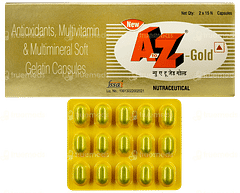

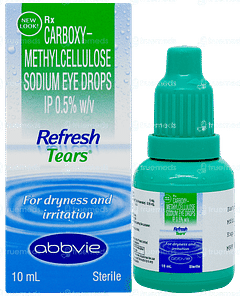
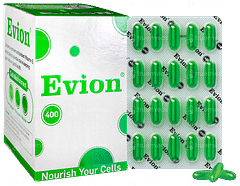
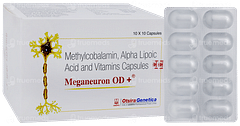







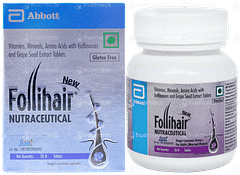
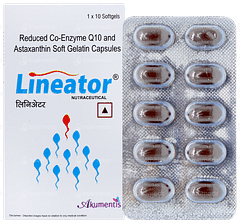
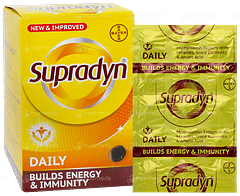

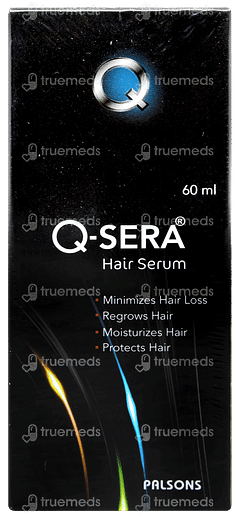



Disclaimer
Top-Selling Medicines:
...View more
Top-OTC medicines:
...View more
Company
About UsHealth ArticleHealth StoriesHealth LibraryDiseases & Health ConditionsAyurvedaUnderstanding Generic MedicinesAll MedicinesAll BrandsNeed HelpFAQSecuritySubscribe
Registered Office Address
Grievance Officer
Download Truemeds
Contact Us
Our customer representative team is available 7 days a week from 9 am - 9 pm.
v4.10.3
2025 - Truemeds | All rights reserved. Our content is for informational purposes only. See additional information.
Our Payment Partners









